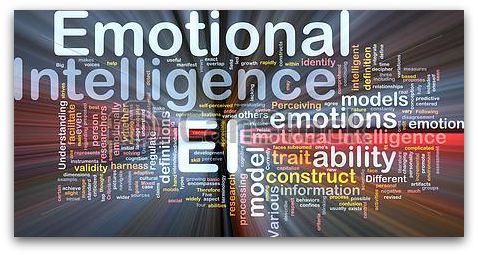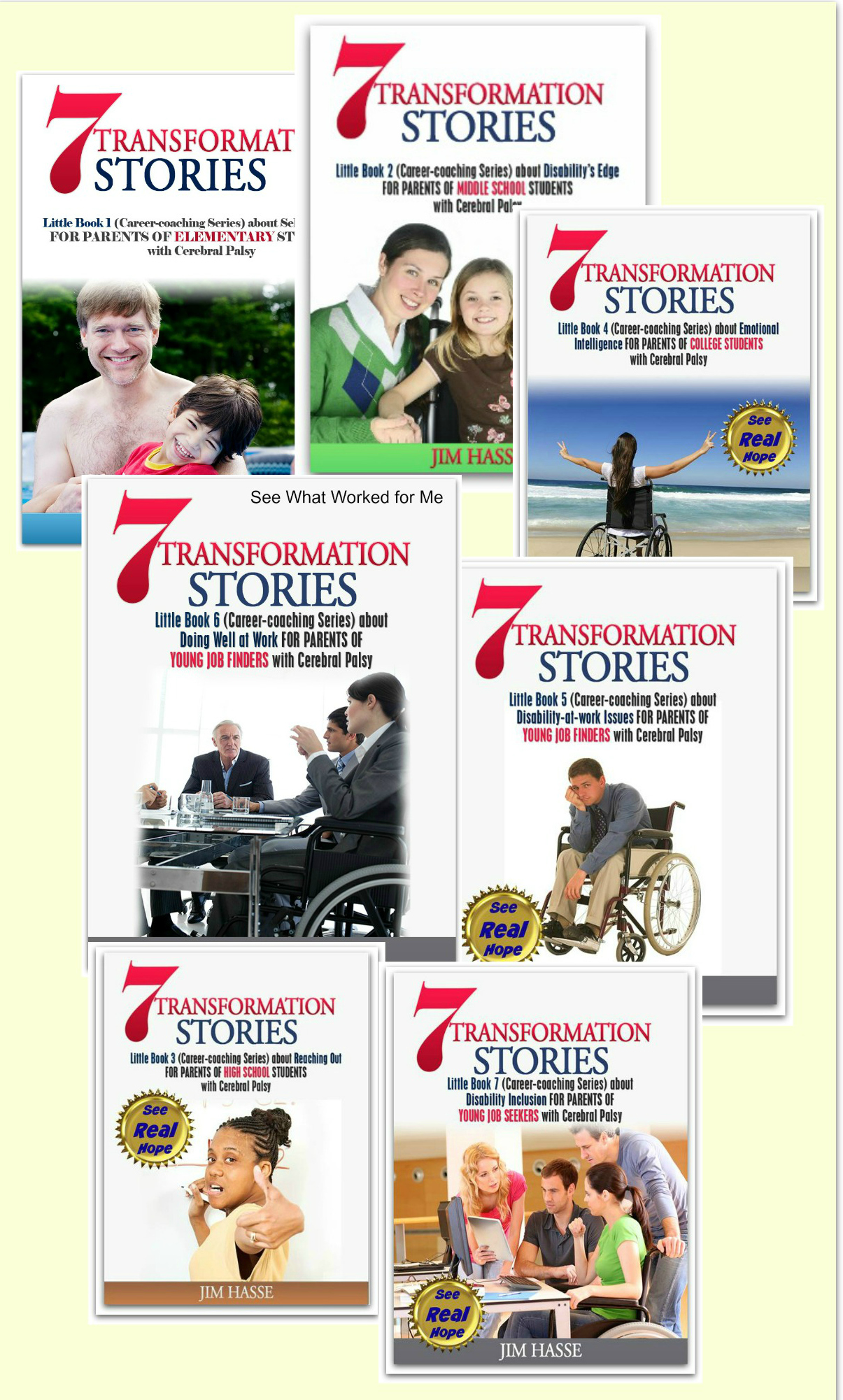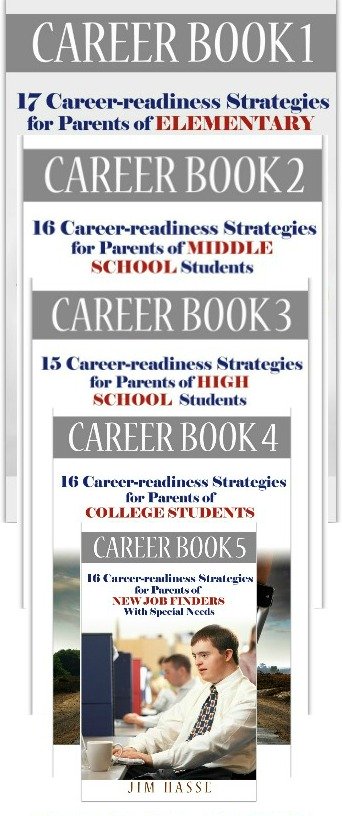Emotional Intelligence Test: Cerebral
Palsy
Career Builder for College Students
By Jim Hasse, ABC, GCDF, Disability Employment Expert
_________________________________________________________
An emotional intelligence test is almost always near the top of
every employer’s wish list when it comes to the most
valuable assets a job candidate can offer a hiring manager.
Why?
Emotional intelligence (EI) has a surprising relationship
to success in a business setting. MetLife,
for instance, has found its sales associates who score high in EI outsell those
with low EI by an average of 37 percent during their first two years of work.
Your college student with cerebral
palsy (CP) probably possesses EI skills, but they may be under-developed and an
untapped resource. A youngster is not born
to do well on an emotional intelligence test. EI is learned (unlike an individual’s intelligence quotient) -- first
from you, as a mom or primary caretaker, and then from others, such as a mentor.
So, exactly what is an emotional intelligence test? Here are some characteristics you have probably already recognized in yourself as a parent, mentor or coach:
- You
are resilient to stress, enabling you to very rapidly calm and refocus
yourself under trying circumstances, according to Jeanne Segal, Ph.D., a
psychologist, sociologist, popular speaker, and internationally recognized
author. For instance, she says, you use gentle humor to help you say
things that might be difficult without creating a flap and use appropriate
eye contact, facial expression, tone of voice, touch, posture and gesture
to show you’re paying attention to others.
- You
have the potential to identify your own and someone else’s emotions and
feelings, you use these emotions and feelings in constructive ways, you
can sense someone else’s complex feelings that he wishes to conceal and
you can crack a joke and cheer others on a team by saying the right thing
at the right time, says Carlos
Todd, LPC.
- You
form optimal relationships with other people through the attributes of
hope, empathy, trust, integrity, honesty, creativity, resiliency,
consequence-thinking and optimism so you can build stronger social
networks and manage difficult situations, write J. S. Stein and H. E. Book
in The EQ Edge: Emotional Intelligence
and Your Success (Jossey-Bass, Hoboken, N.J., 2006).
- You see the positive side of stressful situations and empathize with the less fortunate, states study team leader and psychologist Robert Levenson, University of California- Berkeley.
But, the two most intriguing characteristics of an emotional intelligence test that I’ve found are these (again from J. S. Stein and H. E. Book): the ability to delay gratification in pursuit of long-range goals and the ability to “unlearn” helplessness and hopelessness when faced with adversity.

My CP and EI connections
My CP has helped me develop those
two EI attributes: ability to delay gratification and the ability to "unlearn" helplessness.
At age seven, for instance, I
remember riding the Greyhound bus from a small town near our farm to an
orthopedic school in our state’s capital city each Monday morning with tears
and dread. I did not want to leave home for the whole week and live with my
week-day parents, even though they were kind, loving and gentle. I wanted to be
home because my mom was sick with cancer, and I was afraid she would die, and I
would be alone.
But, we managed the situation as a family for seven
years. And, by doing so, I learned a bit of what it was like to live
independently and how to relate to different types of people and how to be
patient -- skills I needed when I got my first job as a newsletter writer.
During the first week on that job, I learned that the
newsletter’s small-town printer was using hot type (from the Gutenberg days)
instead of an offset printing process, which was the latest innovation in the
early 60s (before the digital revolution). And, I also learned he had a
drinking problem. That explained why some of the photos in my newly adopted
newsletter often seemed to be crooked and not exactly square.
I had the urge to change printers immediately because
it reflected my own work. But, I also soon recognized small-town relationships
with local merchants were important to my supervisor and my company. So, I
bided my time and eventually gained an opportunity to choose another printer
for my newsletter -- some three long years later.
Living with CP perhaps taught me how to delay
gratification, but it did not always serve me well in taming my impetuous
nature. Even as a 20-year “veteran” on the job, I could become impulsive, rash,
hotheaded, and inconsiderate of others.
In 1987, I became totally convinced (with the
enthusiastic backing of my staff) that the company, to survive, needed to
change its top-down management style to one that was more team-oriented and
participatory. And, I had helped senior management step through a selection
process for choosing a management consultant who could help us make that
transition.
I had people on my own staff who were ready to “jump
ship” if some drastic changes in our way of conducting business were not made.
It was decision-making time, and, in a private
conversation with my CEO, I blurted out, “If we don’t do something now, I don’t
see why I need to stay here.”
“Did I hear you right?” he calmly asked.
“No, that’s not what I meant,” I immediately replied,
trying to take back what I knew was an overstatement on my part. “I’m just
saying I think this is important to the future of our company.”
I diffused the situation quickly. Without realizing
it, I was also demonstrating my EI and developing my own emotional intelligence test.
I was reminded of this quote from Aristotle at around
350 BC:
"Anyone can become angry; that is easy. But to be angry with the right person, to the right degree, at the right time, for the right purpose, and in the right way -- that is not easy."
Aristotle knew about the right emotional intelligence test before EI became a buzz word.
What you can do
Guide your college student with CP in learning how to get in tune with his or her EI. You may ask: “How has learning to deal effectively with your CP helped you acquire your EI and build your own emotional intelligence test?”
Then, encourage your youngster to develop a brief narrative which illustrates that connection. Discuss how it can be applied to a prospective employer’s circumstances.
That brief story, used strategically during a job marketing campaign, can help your college student successfully make the transition from school to work -- and find the right job with the right employer.
Return from Emotional Intelligence Test to Interview Tips
Go to Cerebral Palsy Career Builders
This is Creative Commons content. You can freely and legally use, share and repurpose it for non-commercial purposes only, provided you attach this sentence and the following attribution to it (including the two links):
Originally written and illustrated by Jim Hasse, ABC, GCDF, owner of Hasse Communication Counseling, LLC, who, as a person with cerebral palsy, served for 10 years as a vice president in a Fortune 500 company during his 29-year career in corporate communication. He’s an Accredited Business Communicator, certified as a Global Career Development Facilitator and author of 14 Amazon books about disability awareness and disability employment issues.





